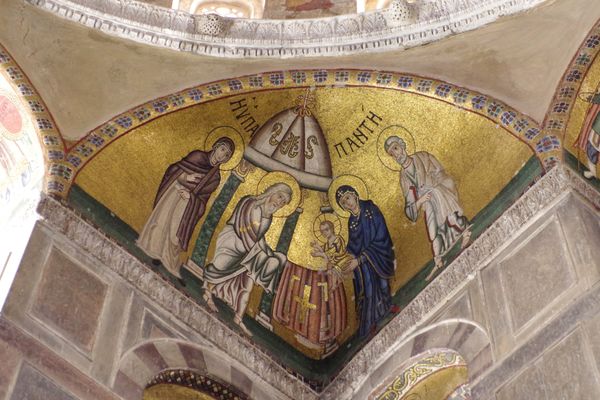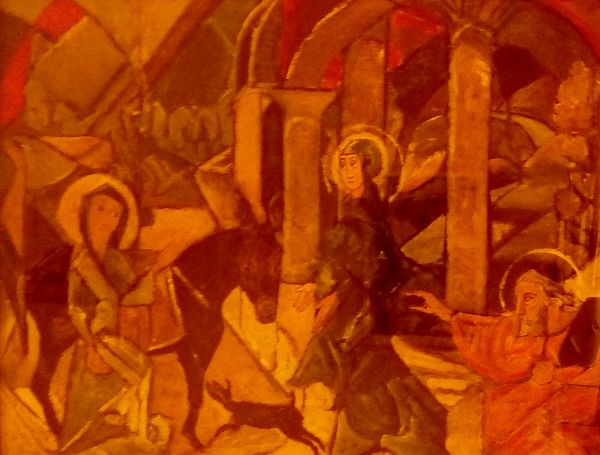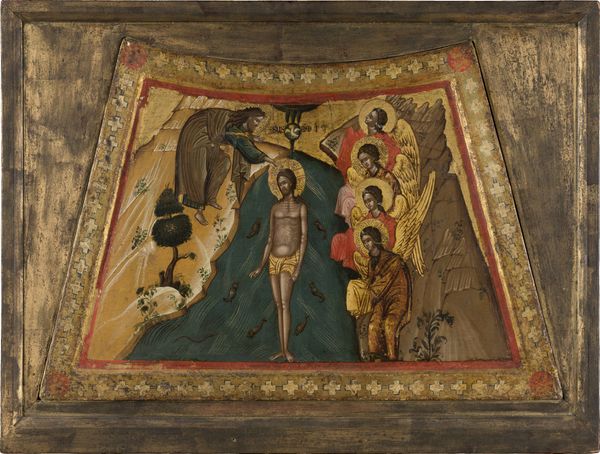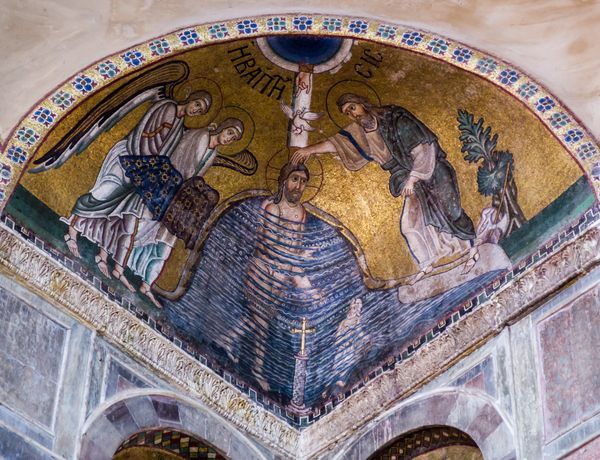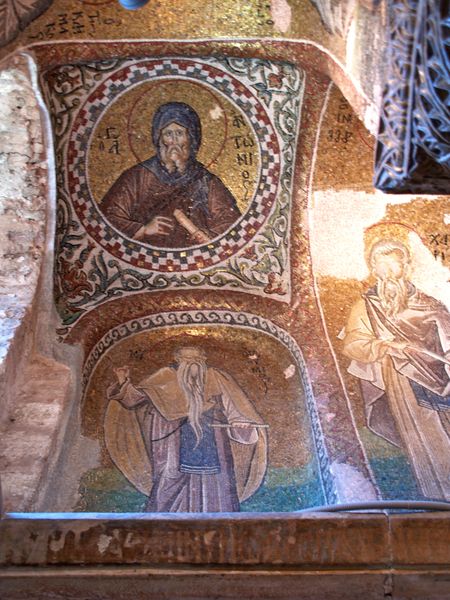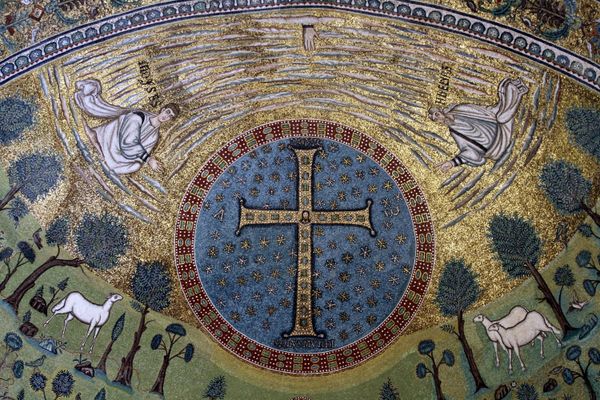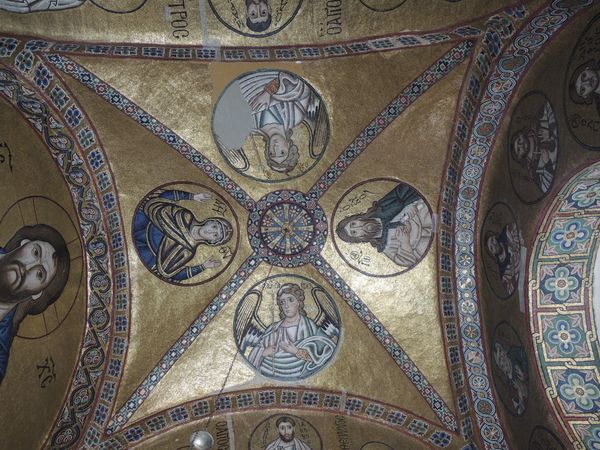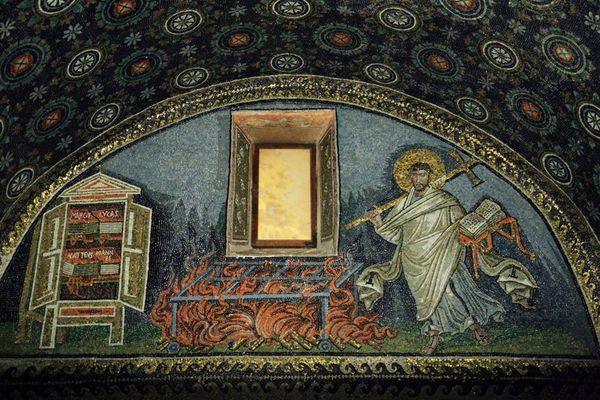
mosaic, photography
#
mosaic
#
byzantine-art
#
narrative-art
#
structure
#
holy-places
#
figuration
#
photography
#
history-painting
Copyright: Public domain
Editor: Here we have the "Annunciation Mosaic" from 1320, currently housed in the Chora Church in Istanbul. The detail is incredible given the mosaic medium, yet it also feels distant. What narratives do you think this work puts forward? Curator: This mosaic, nestled within the Chora Church, operates on multiple levels. Yes, on the surface, we see the Annunciation, a pivotal scene of the divine interrupting the mundane. But let’s consider its broader context. This wasn’t just decoration; it was a didactic tool. The artist uses Byzantine art styles to convey narratives of power and divine right, cementing established hierarchies. Look at how Mary is depicted, responding to an angelic figure. What do we see regarding notions of gender and power? Editor: Well, there’s a clear power dynamic visualized, wouldn't you say? Mary looks surprised. She seems almost caught off guard by the event. Curator: Precisely! And it’s critical to note the artist's hand in shaping that perception. Remember that the Chora Church mosaics emerged during a period of immense social and political change within the Byzantine Empire, rife with issues of class struggle, the status of women, and church corruption. I’d suggest that images like this were created to instill very specific social beliefs that maintained a complex hierarchical system. Editor: So, you're saying this image isn't a neutral depiction but is a way of visualizing religious dogma? Curator: Exactly. It’s a calculated performance that plays a key role in supporting established power structures. Understanding the visual rhetoric allows us to see the social values and beliefs reflected within its historical framework. Editor: I see what you mean. It reframes how I view the work. Thank you for making the socio-political context apparent!
Comments
No comments
Be the first to comment and join the conversation on the ultimate creative platform.

